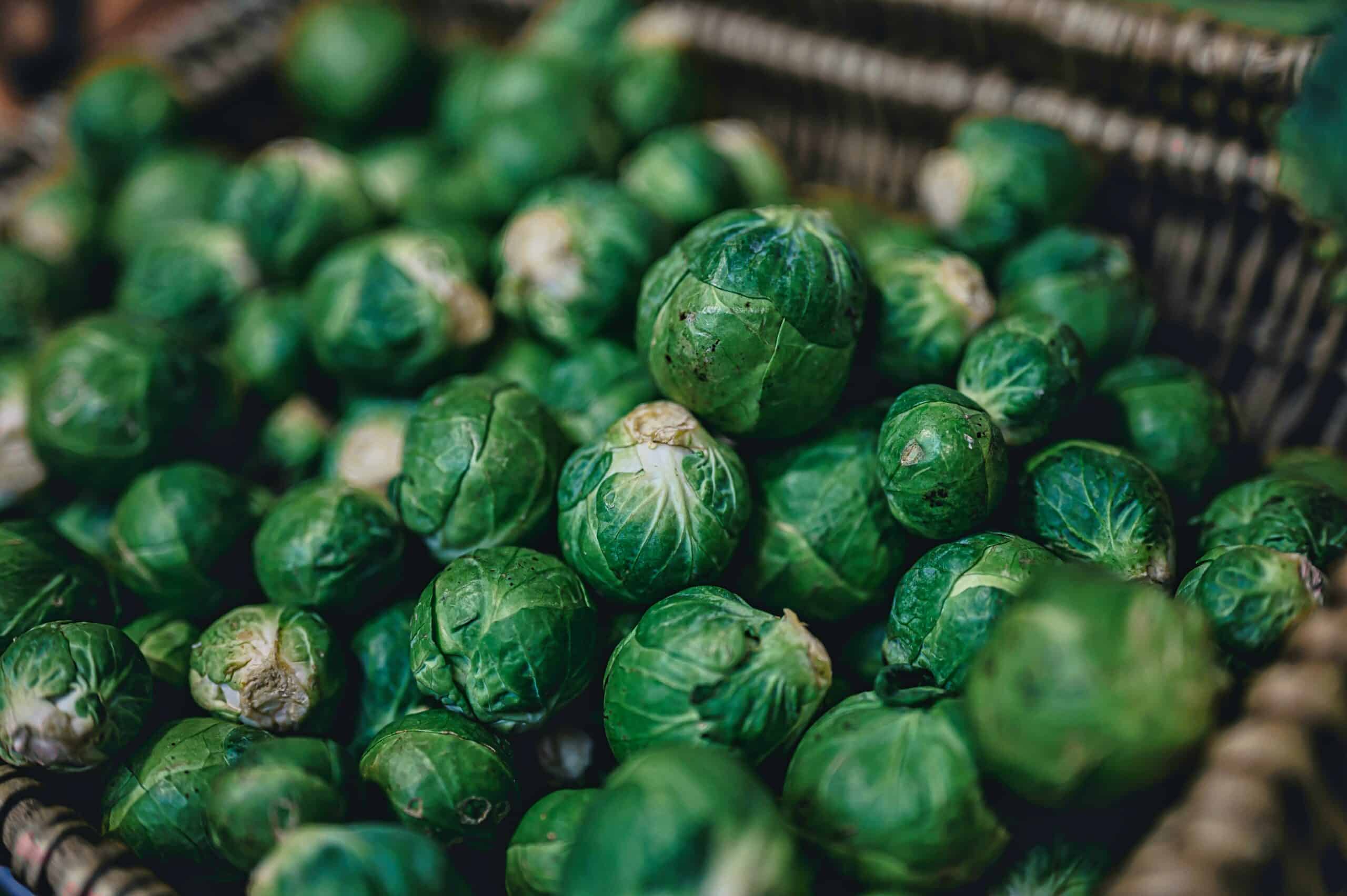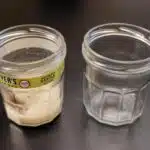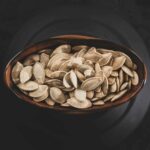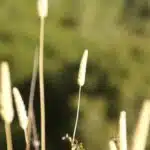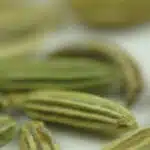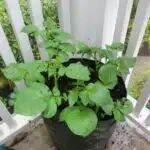Growing sprouts in a jar is an easy and affordable way to enjoy fresh, nutrient-packed greens year round. Take for example the case of Marisa, a busy working mom who had always wanted to incorporate more nutritious foods into her family’s diet. With limited time and money, she decided that growing her own sprouts at home was the perfect solution. By simply following these simple steps, Marisa was able to successfully grow her own sprouts in a matter of days.
As a specialist in botany and gardening, I have seen firsthand how empowering it can be for individuals to grow their own food at home. Growing your own sprouts not only provides you with delicious and nutritious greens all year long; it also has tremendous environmental benefits as well. Not only are you reducing your carbon footprint by avoiding store bought produce, but you are also saving on packaging waste that comes with pre-packaged produce from the store.
If you’re looking for an easy way to add fresh greens to your meals while also making an eco-friendly choice, then growing sprouts in a jar is the perfect solution! In this article, we will discuss everything you need to know about growing your own sprouts at home: from what supplies you need and how to properly prepare them before planting, all the way through harvesting and storing them once they are ready. Read on for more information on how to start growing your own sprouts in a jar!
What You’ll Need
From the dawn of time, the art of growing sprouts has been a staple for many cultures around the world. It’s no surprise that it continues to capture our imaginations today. As specialists in botany and gardening, we understand firsthand how enjoyable and rewarding it can be to grow sprouts in a jar.
When starting out, you’ll need some specific items: a wide-mouth mason jar, a piece of cheesecloth or other breathable fabric, a rubber band, some seeds (such as alfalfa or lentils), and water. Place the cheesecloth over the top of the jar and secure with a rubber band. Then, put two tablespoons of your chosen seed into the jar. Fill the jar with water and give it a gentle stir before draining off all the excess liquid.
Now comes the fun part – caring for your sprouts! Rinse them twice daily by filling up your jar with water, swirling it around gently, then pouring off all but about 1/4 inch of liquid remaining at the bottom of your jar. Make sure to place your jar somewhere with plenty of sunshine so that your sprouts can get enough light as they grow! With just these few simple steps, you’ll be well on your way to enjoying delicious homegrown sprouts in no time at all.
Choosing And Preparing Your Seeds
Growing sprouts in a jar is an easy, fun way to bring fresh nutrition into your home. It’s like a miniature garden that you can tend indoors, and it’s the perfect activity for green-fingered gardeners-in-the-making! Choosing and preparing the right seeds is key to success when growing sprouts, so let’s dive in and explore what works best.
First up, make sure you choose the type of seed that you want to grow – there are lots of different varieties out there, ranging from alfalfa to lentil to sunflower. Whichever type you pick, it’s important to make sure that they are certified organic and free of contaminants. As a botanist or gardener with expertise in this area, I recommend buying your seed from reputable suppliers who guarantee that their produce meets these standards.
Once your seeds have arrived, you need to prepare them for growth by soaking them overnight in lukewarm water. This helps stimulate germination and gets them ready for sowing into the jar. Once they’ve soaked long enough (usually around 8 hours), drain off any excess water using a strainer or sieve before transferring your sprouting seeds into the jar – they’re now ready for some nurturing care!
Sterilizing Your Jar
It is essential to ensure that the jar in which you will be growing your sprouts is sterile and free of any bacteria. This third step involves sterilizing your jar so that your sprout-growing efforts are not for naught. Just like a ship in a bottle, it is important to take the time to make sure everything fits snugly before you can set sail.
To begin, wash your jar in hot soapy water and rinse thoroughly. Subsequently, fill it with boiling water and let it sit for several minutes. This will help kill any microbes that may be present on the surface of the jar. Additionally, if you have access to a dishwasher, you can put the jar through a cycle and allow it to air dry afterwards. As an extra precaution, some people opt to dip their jars into a solution of bleach and water before rinsing them off and allowing them to air dry once more.
At this point, your jar should be ready for use! The next step is soaking the seeds in filtered or spring water overnight; this will help them germinate and start sprouting much faster when placed inside the jar. With all of these steps combined, you’ll be well on your way towards growing a beautiful crop of sprouts!
Soaking The Seeds
Soaking the seeds is a crucial step in growing sprouts in a jar. It’s like opening the door to a new world of opportunity and possibility. For those looking to sow the seeds of success and reap the rewards, this is an essential stage of the process.
As with any gardening project, it’s important to ensure that you use only the best quality seeds for your sprouts. The fresher they are, the better your results will be. Depending on which type of seed you choose, it should be soaked overnight in lukewarm water or distilled water before planting them in your jar. This will help to reduce germination time and make sure that the seeds can easily absorb moisture from their surroundings.
To maximize success rates when soaking your sprouts’ seeds, it’s also important to consider factors such as temperature and pH balance. The ideal temperature for soaking your seed should be between 65°F (18°C) and 72°F (22°C). Keeping an eye on pH balance is equally important; it should be kept at 6-7 for optimal growth conditions. With these two elements in check, you will be ready for draining and rinsing your soaked seeds – ready to begin the next stage of sprout growth!
Draining The Soaked Seeds
The fifth and final step in growing sprouts in a jar is draining the soaked seeds. As a specialist in botany and gardening, I’d like to provide an overview of this step. First, after the seeds have been soaked for the recommended amount of time specified by the seed package, they need to be drained. This can be done by simply pouring out the soaking water and rinsing the seeds with fresh water. To ensure that any excess water is removed, it’s important to shake off any remaining liquid before transferring them to the jar.
Once drained, it’s essential to rinse them well with plenty of cool water. This will help remove any debris from the seeds that may have accumulated during soaking or transport. Rinsing also helps promote even growth and ensures that no mold or bacteria gets trapped inside the jar due to insufficient drainage. Additionally, it’s important not to leave them wet for too long as this can cause them to rot before they are ready for planting.
Finally, this step is key for getting your sprouts ready for their next stage of growth – which is rinsing them regularly until they’re fully grown! In order to keep sprouts healthy and free from contamination during their germination process, it’s important that you pay close attention to how often you rinse them while they’re in the jar.
Rinsing The Seeds
Rinsing the seeds is a crucial step in the sprout-growing process. It helps to prepare them for their journey into germination and growth. Like a baptism of sorts, this ritual initiates the seed life cycle, allowing them the opportunity to emerge from their dormant state and take root in the jar. Here are five important things to keep in mind while rinsing:
• Use fresh, cool water – never warm or hot water as this can damage delicate seedlings. • Rinse lightly – too much pressure can break apart or damage the delicate seeds. • Rinse thoroughly – it’s important that all dirt and debris is removed from the seeds before continuing with growth. • Monitor closely – watch for any mold or fungus that may be forming on the surface of the seeds during rinsing. If detected, discard immediately. • Change water daily – refreshing the water daily not only helps keep the environment clean but will also help prevent any potential bacteria from forming on the surface of your seeds.
For experienced gardeners, this process should be straightforward and familiar; however, it’s important to remember its importance when growing sprouts in jars. This step provides a clean start for your sprouts, helping protect them from unwanted contaminants during germination and growth stages. As with any other stage in gardening, you must remain vigilant and attentive throughout this process to ensure success with your sprouts! With careful attention, your jar-grown sprouts will soon be ready to move onto their next stage: keeping them in their jar home until they are ready to eat!
Keeping The Seeds In The Jar
Keeping the seeds in the jar is an essential step, so it’s important to get it right. It’s like a game of Jenga: if you take the wrong block out, you risk the whole jar tumbling down! To ensure your sprouts grow properly, it’s essential to follow this step with care.
When keeping sprouts in a jar, you’ll want to make sure that the environment is just right. You’ll need to maintain a balance between airflow and moisture; too much of either will ruin your sprouts. Fill the jar with enough water to cover the seeds but not so much that it drowns them—you don’t want them floating away! Then cover the top with a piece of cheesecloth or mesh and secure it with a rubber band. This will allow some air in while preventing any unwanted pests from getting inside.
It’s also important to check on your sprouts every day and make sure they’re getting enough light and warmth. A sunny windowsill is ideal for this purpose, but if there isn’t one available, artificial lighting can work too. If the environment isn’t warm enough, your sprouts won’t grow as quickly as they should, so take that into consideration when deciding where to keep them. With all these tips in mind, you’ll be well on your way towards successful sprooting!
Monitoring The Sprouts
It is important to monitor the sprouts as they grow. During this stage, it is essential to observe the progress of the sprouts carefully and make sure that the environment remains suitable for them. By observing the sprouts, you can determine when they are ready to be harvested. This will ensure that you get maximum yield from your sprouting jar.
If you notice any discoloration, mold or other signs of spoilage, it’s important to take action right away. You should also keep an eye out for signs of over-watering, such as standing water or wilting stems. In these cases, it may be necessary to reduce watering frequency or quantity.
It is also a good idea to check in on your sprouts frequently throughout the growing period so that you can take corrective action if needed. With proper monitoring and care, your edible sprouts will soon be ready for harvesting! Now that your sprouts have had a chance to develop and mature, it’s time to move on to the next step: removing them from the jar.
Removing The Sprouts From The Jar
Now that the sprouts have been successfully grown in the jar, it is time to remove them. To do this, first rinse the sprouts with cold water. This will help to wash away any leftover husks or hulls which may be adhering to your sprouts. Secondly, be sure to drain out as much of the excess liquid from the jar as possible. Thirdly, transfer the sprouts into a colander and allow them to dry completely before transferring them into an airtight container for storage. Lastly, here are four key points for removing sprouts from the jar:
- Rinse with cold water
- Drain out excess liquid
- Transfer into a colander
- Allow to dry completely before transferring into an airtight container By following these steps and adhering to these guidelines, you should have no trouble removing your freshly-grown sprouts from their original growing vessel – the jar. When done properly, you will find that your harvested sprouts remain in perfect condition and ready for consumption or further storage if desired. With this in mind, let us now turn our attention to how best to store these freshly-grown sprouts for future use.
Storing The Sprouts
Storing your sprouts is the final – and perhaps most important – step in your sprouting adventure! Done correctly, this step will ensure that you enjoy a consistently delicious and nutritious harvest every time. As a specialist in botany and gardening, I’m here to tell you that proper storage of your sprouts is key to achieving these results.
When storing your sprouts, it’s essential to keep them cool and dry. If you’ve grown them in a jar, use the same one for storing; just make sure it’s airtight so the sprouts will stay fresh longer. Additionally, try to refrigerate the jar as soon as possible after harvesting. This will help maintain their moistness and crunchy texture.
Finally, if you’d like to extend the shelf life of your sprouts even further, consider freezing them. Simply freeze them in a sealed bag or container before transferring into an airtight jar, making sure there’s no excess air inside. This can help them last up to several months!
Now that we’ve discussed how to store your sprouts properly, let’s move on to troubleshooting common problems with growing your own at home...
Troubleshooting Common Problems
It’s coincidental that troubleshooting common problems is the next step. After all, it’s only natural to want to ensure our sprouts grow properly and that they remain safe for consumption. As a specialist in botany and gardening, I often recommend these troubleshooting tips to my clients when they’re growing sprouts in a jar.
First of all, it’s essential to assess the environment your sprouts are being grown in. Make sure that your jar is put in a location that doesn’t experience too much direct sunlight or too many drafts. You also want to make sure the temperature won’t fluctuate drastically throughout the day and night – this could stunt the growth of your sprouts or even cause them to rot.
Next, you need to check the humidity levels inside your jar. If it’s too high, you might experience moldy sprouts, so make sure you don’t over-soak them when rinsing them each day! It’s also important to keep an eye on water levels – if there’s not enough moisture in your jar, then your sprouts won’t be able to flourish as well as they could.
Finally, if you’re still having problems with moldy or stunted growth, try adding some apple cider vinegar or hydrogen peroxide into the water when you rinse them each day – this can help prevent mold from forming on your precious sprouts! With these simple troubleshooting tips, you’ll be able to enjoy fresh and delicious sprouts without any problems!
Benefits Of Eating Sprouts
It is estimated that over 25% of the world’s population regularly consumes sprouts. As a Specialist in botany and gardening, I understand the benefits of eating sprouts. In this article, I will discuss the various advantages of consuming these nutritious greens.
The primary benefit of eating sprouts is their powerful nutritive content. Sprouts are rich in vitamins, minerals, antioxidants, and phytonutrients that can help boost our immune system and provide us with essential nutrition. They are also a great source of dietary fiber which helps to keep us regular and aids digestion. Moreover, sprouts are lower in calories than most other vegetables and contain fewer carbohydrates so they can be an ideal snack for those looking to lose weight healthily.
In addition to their nutritional value, sprouts also have numerous other perks such as being easy to grow from home or purchased from grocery stores. Plus, they can be enjoyed raw in salads or cooked into delicious recipes like stir-fries and soups. Growing them yourself adds a sense of pride and accomplishment as well as allowing you to control the quality of what you consume.
Sprouts are certainly an excellent addition to any diet whether you choose to grow them yourself or purchase them from your local store. In light of this information, now let’s move on to learning about how we can make recipes to enjoy our sprouts!
Recipes To Enjoy Your Sprouts
Now that you know how to grow sprouts in a jar, it’s time to learn about the delicious recipes you can make with them. Sprouts are incredibly versatile and can be used in many different dishes. Here are some tasty ideas for incorporating sprouts into your daily meal plan.
If you love salads, then sprouts are the perfect addition. Try adding alfalfa or broccoli sprouts to a salad of leafy greens or chopped vegetables like spinach, carrots, celery, and cabbage. For an even healthier twist, top your salad with a sprinkle of sunflower seeds. Sprouts also taste great tossed with cooked grains such as quinoa or brown rice for a hearty side dish or main course.
For lunch, why not try making a wrap filled with fresh veggies and sprouts? Spread hummus on whole-wheat tortillas and layer with avocado slices, shredded carrots, cucumbers, tomatoes, and sprouts of your choice. Roll it up and enjoy! You can also add sprouts to sandwiches or wraps made with lean proteins like chicken or turkey breast or plant-based proteins such as tofu or tempeh.
TIP: Sprouts are packed with nutrition so they’re a great way to get more vitamins and minerals into your diet without sacrificing flavor. Get creative and come up with some new recipes using your freshly grown sprouts!
Frequently Asked Questions
This article will now focus on the frequently asked questions (FAQs) of growing sprouts in a jar. The most popular FAQs are listed below for easy reference:
• How can I make sure my sprouts have enough air? • How often should I rinse my sprouts? • What is the best way to store my sprouts?
As an expert botanist and gardener, it is essential to ensure that your sprouts are receiving ample air and moisture at all times. To provide adequate airflow, it is recommended to add a few small holes in the top of the jar lid. This will allow some fresh air to enter while still keeping out any external contaminants. Furthermore, it is important to rinse the sprouts two to three times per day with filtered water. Doing so helps prevent mold growth and keep them hydrated. Finally, once the sprouts are ready for consumption, it is best to store them in an airtight container in the refrigerator for up to one week.
In addition, reused jars can be used for other sprouting projects such as mung beans or alfalfa seeds. With a few simple steps and careful attention, you can enjoy delicious homemade sprouts for salads, sandwiches and more! As this article has demonstrated, growing your own sprouts at home does not have to be difficult or time-consuming – just follow these guidelines and you’ll be well on your way!
Reusing The Jar For Other Sprouting Projects
As a specialist in botany and gardening, it’s important to understand the best ways to reuse jars for sprouting projects. If you’ve grown sprouts in a jar, the same jar can be used again with a few simple steps. This article will discuss the process of reusing a jar for subsequent sprouting projects.
To start, it’s important to thoroughly clean and disinfect the jar after each use. Wash it with warm soapy water and rinse it out completely before drying it off with a paper towel or air-drying it on the countertop. Once the jar is dry, you’ll want to make sure that there are no remaining residue from previous sprouts that could cause potential contamination when you begin your next project.
The next step is to fill your jar with fresh, filtered water and add new seeds as instructed for your particular type of sprout. Make sure that all of the seeds are evenly distributed throughout the jar and then cover with cheesecloth or other breathable material. Allow the seeds to soak overnight so they can begin germinating before rinsing them off and draining out any excess water. Finally, place your jar in an area where it will receive plenty of indirect sunlight each day while continuing to rinse and drain every 12 hours until your desired amount of sprouts have grown.
With these steps completed, you’ll be able to reuse your jar for further sprouting projects without worry! You’ll be able to grow more nutritious and delicious sprouts without having to purchase new materials each time. Properly maintained jars can be reused multiple times for years of healthy eating habits!
Frequently Asked Questions
What Type Of Seeds Are Best For Sprouting?
When it comes to growing sprouts in a jar, the type of seed you use is an important factor in determining the success of your project. There are many varieties to choose from, each with its own unique characteristics. As a specialist in botany and gardening, I will help you determine which types of seeds are best for sprouting.
When selecting seeds for your jar-grown sprouts, consider the following criteria: • Nutritional value: Some sprout varieties have higher levels of essential vitamins and minerals than others. • Germination rate: This refers to how quickly the seeds will begin to grow once placed in water or soil. • Flavor: If you plan on eating your sprouts, then you may want to consider the flavor profiles of different seed varieties.
Overall, there are several options when it comes to choosing the right type of seed for your jar-grown sprouts. Legumes such as mung beans and lentils are popular choices due to their high nutritional value and fast germination rates. Mustard and alfalfa also make excellent choices because they provide an array of flavors that can be enjoyed by all. For added variety, try combining several types of seeds together for a unique blend of flavors and textures.
Whichever type of seed you choose, proper care is essential for successful growth – make sure to give your sprouts plenty of light and water them regularly with lukewarm water. With the right combination of seed selection and maintenance, you can expect delicious harvests from your jar-grown sprouts!
How Many Times A Day Do I Need To Rinse The Seeds?
“Necessity is the mother of invention”, so they say. When it comes to sprouting, rinsing your seeds is an essential part of the process. Whether you’re using a jar or another method, you’ll need to know how often you need to rinse your seeds in order for them to properly develop and grow.
As a specialist in botany and gardening, I can tell you that when sprouting seeds, it’s important to rinse them at least twice a day. You can do this with either cold or warm water – whichever works best for you – but make sure that the water isn’t too hot or too cold as this could damage the delicate sprouts. Rinsing your seeds should take about two minutes each time and be done by gently swirling them around in the water until all visible dirt has been removed.
Additionally, it’s important to remember that rinsing your seeds will help keep them moist and hydrated while they are growing. This helps prevent any mold from forming on the surface of the seedlings as well as providing oxygen which will help increase their nutrient uptake as they grow. It’s also essential that you keep an eye on the moisture level of your jar – if there is too much moisture present then this could lead to damping off which can kill off your sprouts before they even get a chance to grow!
Therefore, it’s crucial that you follow these guidelines when rinsing your seeds in order for them to properly develop and reach their full potential. With proper care and attention, your sprouts will soon be ready for harvesting – happy growing!
How Do I Know When The Sprouts Are Ready To Harvest?
Did you know that sprouts are nutritional powerhouses, packing more vitamins and minerals in a tiny seed than most fruits and vegetables? Growing them at home is a great way to enjoy their benefits. But how do you know when the sprouts are ready for harvesting?
First off, it’s important to remember the timeline of your sprout growth. Depending on the type of seed you’re growing, it can take anywhere from three days to two weeks before your sprouts are ready to pick. During this time, rinse the seeds 2-3 times a day with lukewarm water—this will keep them moist so they continue to grow.
As your sprouts begin to mature, examine them closely for signs of readiness. If the leaves have grown long and their root systems look healthy and well-developed, then they’re likely ready for harvest. You can also give them a taste test: if they’re crunchy and flavorful, they’re good to go! Once harvested, store them in the refrigerator to extend their shelf life.
Sprouting at home is not only an easy and affordable way to get fresh produce—it can be a fun activity too! With just a little patience and effort you can enjoy supercharged nutrition straight from your kitchen windowsill!
How Long Do The Sprouts Last After Harvesting?
The process of harvesting sprouts can be a tricky one, as the timing needs to be just right in order for the sprouts to be at their peak freshness. But how long do these sprouts last after they’ve been harvested? This is an important question for anyone who’s looking to grow and consume their own sprouts.
As a specialist in botany and gardening, I’m here to tell you that it really depends on the variety of sprout being harvested, as well as the conditions in which they are kept after harvesting. Generally speaking, most sprouts will remain fresh up to two weeks after they have been harvested. That said, if you keep them in an airtight container and store them in the refrigerator, they can last up to three weeks.
It’s also important to remember that once you harvest your sprouts, you should rinse them off with cold water before storage. This will help remove any bacteria that might otherwise cause your sprouts to spoil more quickly. Additionally, make sure that there is no standing water left on the container or jar when storing your freshly-harvested sprouts; this could also lead to spoilage and should be avoided at all costs.
With these tips in mind, you’ll have no problem making sure your freshly-harvested sprouts stay fresher for longer! Enjoy!
Is There A Way To Make Sprouts Without Using A Jar?
Growing sprouts in a jar is an exciting and rewarding activity for botanists and gardeners alike. It can be a fun and educational way to explore the marvels of plant growth, but it’s also possible to grow sprouts without using a jar! This possibility opens up a world of possibilities for those interested in growing their own sprouts, with just as much success as those who opt for jars.
Surprisingly, all you need is some fabric or cheesecloth, soil, and water. You’ll simply need to cover your chosen container with the fabric or cheesecloth tight enough so the soil doesn’t escape when you water it. Then fill your container with soil, wet it carefully with water and sow your seeds – voila! The warm humid environment created by the cloth will provide an ideal climate for germination while keeping out any unwanted pests.
Sprouts grown this way require more frequent watering than those grown in jars, so make sure to check on them regularly to ensure they remain hydrated. This extra care can be time consuming, but if done correctly you’ll have yourself delicious sprouts within no time! And of course, once harvested they can last just as long as their jar-grown counterparts if stored correctly. So why not give it a go? Give yourself a challenge and experience the joy of growing your own sprouts without using a jar – you won’t regret it!
Conclusion
Sprouting is a fun and rewarding way to grow your own healthy food. With just a jar, some seeds, and some water you can have fresh sprouts in no time. The key points to remember are to choose the right type of seeds for sprouting, rinse them multiple times per day, and harvest them when they reach the desired size. Once harvested, sprouts will last several days in the refrigerator.
Are there other ways to grow sprouts besides using a jar? Absolutely! You can use a container with holes drilled in the bottom, or even tie the seeds up in cheesecloth and suspend it over a bowl of water. There are many creative ways to grow your own sprouts.
Growing your own sprouts is an easy and fun way to add variety to your diet! Not only are they full of nutrition, but they can also be used in salads, sandwiches, soups and more. So why not give it a try? What have you got to lose?

